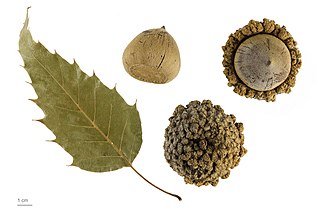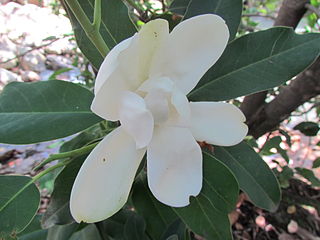The spine-fingered tree frog is a species of frog in the family Hylidae endemic to Mexico. Its natural habitat is subtropical or tropical moist montane forests and rivers. It is found in the Sierra Madre del Sur of Guerrero state, on Cerro Teotepec between 1,450 and 2,415 meters elevation, and northwest of Asoleadero. Its extent of occurrence (EOO) is 478 km2.
Eleutherodactylus albolabris is a species of frog in the family Eleutherodactylidae. It is endemic to Mexico. Its natural habitat is subtropical or tropical moist lowland forest.

The Oaxacan climbing salamander is a species of salamander in the family Plethodontidae. It is endemic to Mexico. Its natural habitats are subtropical or tropical moist montane forests and plantations . It is threatened by habitat loss.

The Zapotec salamander is a species of salamander in the family Plethodontidae.
Thorius minutissimus is a species of salamander in the family Plethodontidae. It is endemic to Mexico. It is known only from one site near Santo Tomás Teipan in the Sierra Madre del Sur of Oaxaca, in pine–oak forest at 2,458 meters elevation. Its extent of occurrence (EOO) is 10 km2, which represents the single location.
Magnolia schiedeana is a species of flowering plant in the family Magnoliaceae. It is endemic to Mexico, where it occurs along the slopes of the Gulf of Mexico.

Quercus skinneri is a species of oak. It is found in Mexico, Guatemala, Honduras, and El Salvador. It is threatened by habitat loss.

Quercus iltisii is a species of oak tree native to western Mexico, where it is found in a small portion of Jalisco and Colima states.

Magnolia pacifica is a species of Magnolia from Jalisco and Nayarit states in western Mexico.
Magnolia pugana, commonly known as almacasusco, is a species of Magnolia from northern Jalisco and southern Zacatecas states in western Mexico.

Quercus mulleri is a rare Mexican species of oak. It has been found only in a small area of the Sierra de Miahuatlán, a sub-range of the Sierra Madre del Sur in southern Oaxaca state.
Quercus nixoniana is an endangered species of oak tree native to southern Mexico. It is found in humid mountain forests of southwestern Mexico, in the states of Jalisco, Guerrero, and Oaxaca.
Magnolia tamaulipana is a species of plant in the family Magnoliaceae. It is endemic to northeastern Mexico.
Magnolia nuevoleonensis is a species of flowering plant in the family Magnoliaceae. It is native to the Sierra Madre Oriental of Nuevo León state in northeastern Mexico.
Magnolia rzedowskiana is a species of flowering plant in the family Magnoliaceae. It is native to the Sierra Madre Oriental of San Luis Potosí, Querétaro, and Hidalgo states in eastern Mexico.
Magnolia vovidesii is a species of flowering plant in the family Magnoliaceae. It is native to the Sierra Madre Oriental of Veracruz state in eastern Mexico.
Magnolia pedrazae is a species of flowering plant in the family Magnoliaceae. It is endemic to the Sierra Madre Oriental of eastern Mexico.
Magnolia vazquezii is a species of flowering plant in the family Magnoliaceae. It is endemic to the Sierra Madre del Sur of Guerrero state in southern Mexico.
Magnolia guerrerensis is a species of flowering plant in the family Magnoliaceae. It is endemic to the Sierra Madre del Sur of Guerrero state in southern Mexico.
Magnolia oaxacensis is a species of flowering plant in the family Magnoliaceae. It is endemic to the Sierra Madre de Oaxaca of Oaxaca state in southern Mexico.






